Can Brands Recover? | Brand
With major conflicts happening around the world, a global pandemic, and an uncertain economic climate, then managing a brand and its reputation has just become a whole lot harder! With so many recent examples of brands having to be reactive to political and audience pressure, a brand's response, reaction time and communications has never been so important than over the last twelve months!
Apple, Coca-Cola, Nestle - there is a very long list of brands all getting a hammering over not pulling out of geographic locations quick enough or not at all. While brands like P&O Ferries make 800 employees redundant over a video message. Have brands completely lost all empathy for their audience?
We discuss the pressure on brands, will they overcome the current climate and reputable damage to their brand(s)? How can brands help protect themselves and become more empathetic?
Opinion Is Not Fact!
First and foremost, it is important to point out that 'opinion is not fact'. Gauging the emotions of so many individuals and groups of people is a real challenge for any brand. Those who publicly express their views can offer a cross-section of what the current mood is toward a brand or topic, but this can change in an instant! Brands now need to be considerate to other points of view and select the appropriate response regarding their communication and business decisions based on as many accurate data intelligence points as possible.
When the crisis in Eastern Europe erupted, brands had to react quickly. While pulling out of whole countries may be easier for some brands than others, your audience meanwhile may not appreciate or even care regarding all the activities, processes and people that have to come into play when responding to an incident. B2B, B2C, it doesn't matter, behind the scenes multiple factors involving supply chains are affected, contracts to consider, cancellation of relationships/partnerships, with potential legal ramifications later down the line. More importantly, innocent individual lives, employees, colleagues are also affected by companies pulling out of other countries so rapidly. While the safety and welfare of people has to surely be the number one priority for any brand, the speed to organise a response can also cost them dearly, resulting in valuable brand degradation every minute, hour and day. If brands do not respond, then they may never recover! Even established brands with tried and tested emergency procedures for different scenarios and the resources to deploy will be working double time to put plans into effect. Brands are against the clock to protect reputation.
An example is Nestle's apparent hesitation to respond to the situation in Eastern Europe, making them an obvious target in the public eye, with people boycotting the brand and stirring up negative emotions within others. For Nestle, this will affect multiple brands and categories.
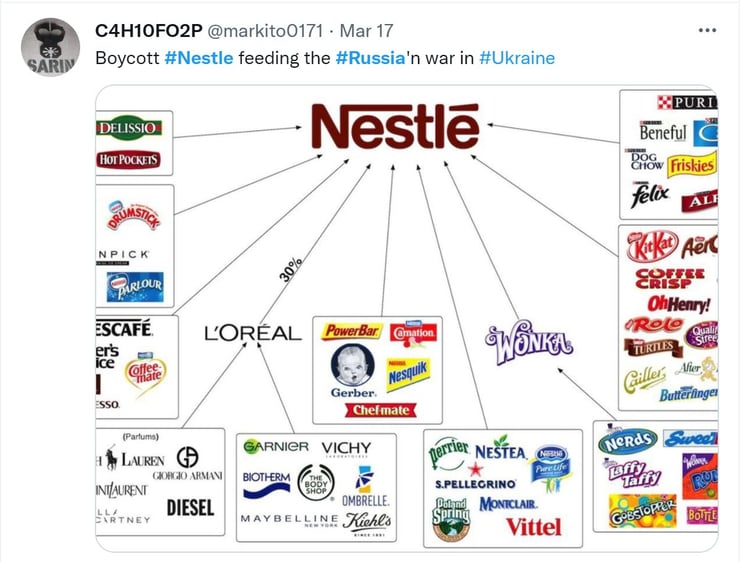
SOURCE: Twitter
What do companies have to do to understand the impact to their brand in the short, medium, long term? We discuss possible practical solutions towards the end of this article.
Managing Multiple Channels
The battle for brand protection has been further compounded by the many channels available to an audience. Online sites, social channels, chat groups, forums and special interest groups all have their areas and even sub areas discussing, praising, shaming brands every minute of every day. Monitoring and responding used to be the job of humans, but due to the sheer volume, artificial intelligence (AI) is being used to effectively monitor, report, trend and triage comments, images, threats. The Secret Source Team uses artificial intelligence to help provide useful intelligence back to brands, helping them to understand and respond in a measured manner befitting of a responsible brand. Using AI to provide empathy and honesty sounds strange, but brands embracing technology to be more humanistic is going to become the new normal. Truly understanding an audience, and being empathetic towards them, is the new super brand power!
Misinformation
Brands reacting appropriately and proportionately to a situation is important, but what if individuals or groups are intent on brand sabotage, no matter of the facts. The spreading of rumours and misinformation has become rife, with no real ramifications for the perpetrators for the distributing of such comments. Misinformation can be spread simply by irate individuals or by professional 'bad actors' who gain by the disseminating wrongful or misleading information. Weaponising information has always been around, but it is getting more subtle and vicious, whipping other groups into a frenzy or worse into a militant body intent on doing irreparable harm to a brand. By understanding what made them angry, sad, happy, disgusted or fearful as examples, will help brands to respond.
A recent example below of countless brands being named and shamed.
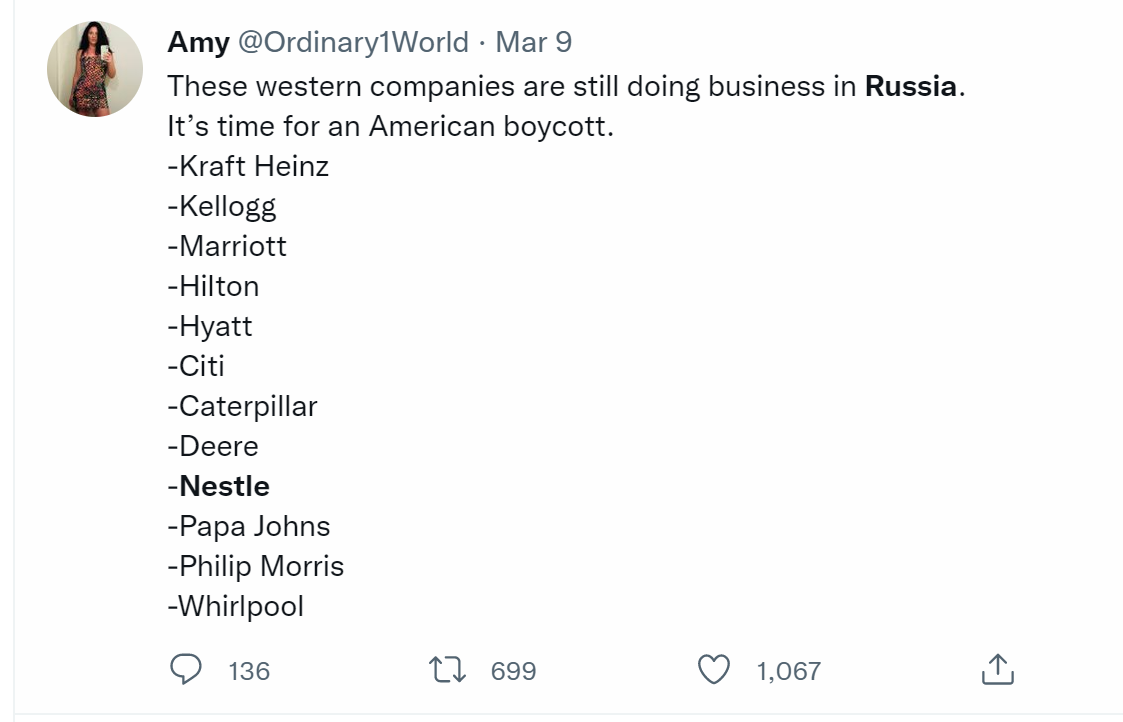
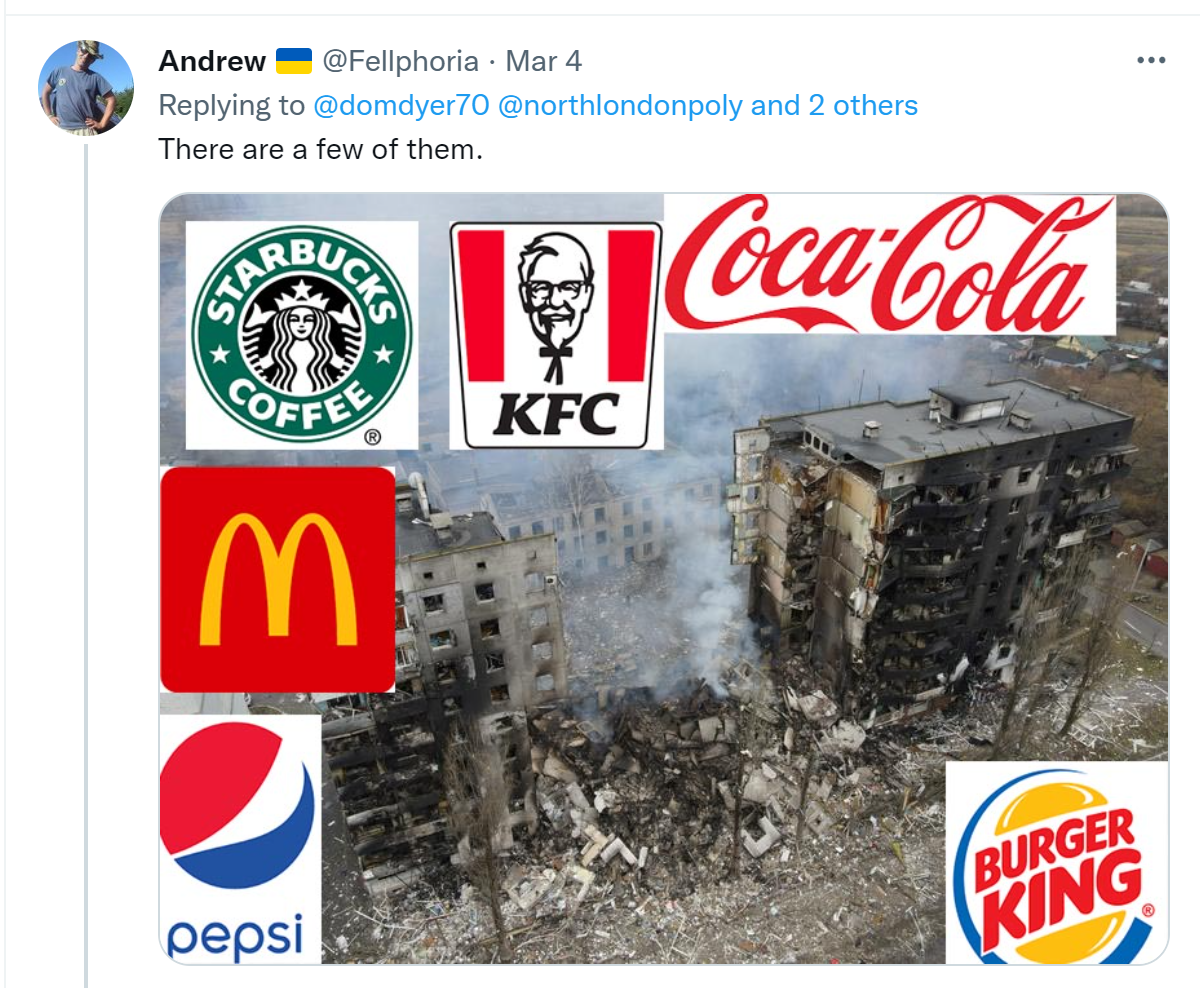
SOURCE: Twitter
Ignore the 'Voice of Society' at your peril!
These days, businesses like to measure everything. However, measuring the many variables within audience emotion has always been tricky to do. These days, clever AI tools can measure the 'emotional climate'. Solutions such as Emotional Climate Reports (ECR) can effectively measure the public opinions, needs and emotions, to assist brands to be respectful of their actions, manage their tone of voice, but also to also monitor and position around their competition and macro environment.
Our view is that by understanding the needs and emotions of an audience it is not about looking to gain the higher moral ground, but rather acting responsibly. Brands are now measured in their response to public opinion, especially in a crisis. Now with AI able to manage unstructured data and help make sense of it, brands can protect their brand reputation but importantly help to safeguard their employees, customers and partners. Indeed, entering into a supply chain partnership with a brand that doesn't think or act in an empathetic manner will backfire on brands. Therefore, carrying out due diligence using Emotional Climate Reports (ECR) on potential or existing business partners' empathetic responses will also become a regular part of the process.
Traditional research, from polling to social media tracking, has proved too slow, inefficient or simply inaccurate. The real value comes from truly understanding societal voice and the emotions behind comments and actions. Conventional market research makes presumptions which can have little relevance to the target audience within the study. Digital research raises concerns such as privacy. There is also brand risk toward brands trying to understand an audience in an intrusive manner.
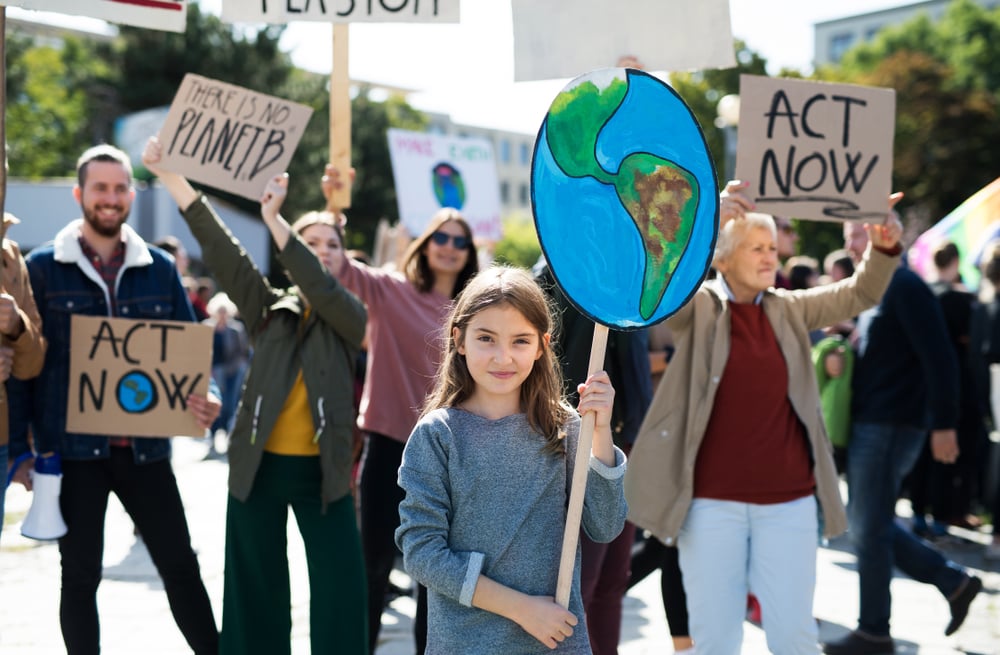
What Can Brands Do To Protect Themselves In The Future?
Using AI tools can help to understand how society views an issue or brand:
-
The needs and emotions associated with it
-
The intensity with which they view it (how much society really cares)
-
How the above points evolve over time.
How can a brand use Emotional Climate Reports (ECR) to help in the future? The process works by tracking the messaging of a brand and benchmarking it against the 'voice of society' using key algorithms within the ECR to help plot how close (or far away) the brand is. Remedial action can then be taken and progress tracked. ECR can be applied to compare against other brands, not necessarily the immediate competition either, but brands that are scoring highly on the empathy radar. Armed with this new market intelligence, positioning can be aligned and refined. Here are just some of the issues Brands using Emotional Climate Reports (ECR) are addressing;
What are brands measuring with ECR?
-
Does society care as much as the brand (intensity)?
-
How much and on what emotional/needs basis?
-
Where does the brand (and competitors) position on the grid?
-
If there is a ‘delta’ how can it be bridged?
-
Who are the most ‘activist’ (intense) societies?
-
Who is currently setting the agenda? Are they ‘experts’ or otherwise?
-
Should particular audience groups, even influencers, be leveraged?
-
How can intensity levels be used to generate a particular action?
-
How can the emotional/needs basis be used to generate a particular action?
-
How do Web findings differ from those of media (News)?
More and more brands are using ECR to help steer everything from communications, operations, service, sales, marketing, product strategy. ECR are being used in strategic business decisions.
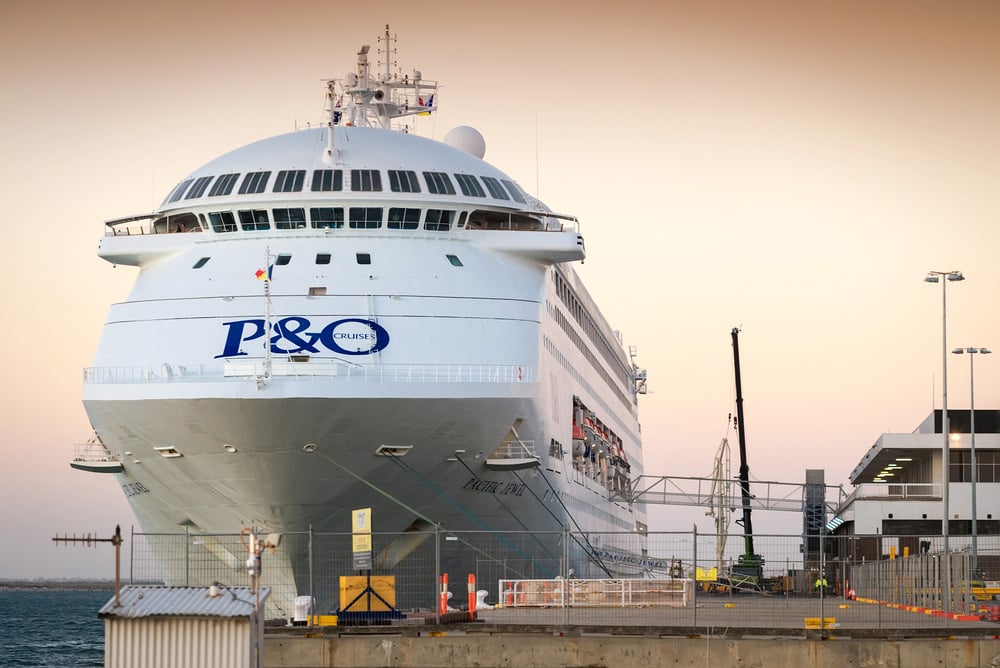
Picture: Major brand trouble for P&O Ferries may affect other brands. Industry analysts and businesses alike will be using ECR to help measure next steps for brand positioning versus the 'voice of society'.
Summary
It is hard to see how brands like P&O Ferries can recover from the recent backlash they have received from the public and government officials. In desparate times it calls for desparate measures, however have P&O, by saving their company's future, now lost huge amounts of brand equity? ECR can tell. Many brands currently will need to double down on understanding their audience's voice over the coming years if they are to recover from the current climate. Forewarned is forearmed, and by truly understanding the 'voice of society', we hope that ECR will create more responsible brands in the future.
From our ECR monitored topics within Agriculture, Crypto, Sustainability to major global incidents, contact the Secret Source Research Team to find out more.
Sales & Marketing Acronyms | TLA
Written by Nick Carlson
Nicholas Carlson is a seasoned marketeer with over 25 years of experience driving impactful strategies across a wide range of industries. With a specialism in SaaS, Technology and Professional Services type organisations. As part of the team at Secret Source, he brings deep insight into the evolving landscape of marketing. Nicholas is passionate about partnering with marketing, sales, and business leaders to enhance marketing delivery and fuel sustainable business growth.
.gif?width=1282&name=Copy%20of%20To%20downloa%20(1).gif)